After 30 years of solemnly pledging "never again," the world stood by and watched in horror as another genocide unfolded — this time in Cambodia under Pol Pot.
On the evening of April 15, 1998, news source Voice of America announced that General Secretary of the Khmer Rouge and wanted war criminal Pol Pot was scheduled for extradition. He would then face an international tribunal for genocide and crimes against humanity.
Shortly after the broadcast, at around 10:15 PM, the former leader’s wife found him sitting upright in his chair next to the radio, dead from a possible overdose of prescription drugs.

Omar Havana/Getty ImagesA young Cambodian woman looks at the main stupa in Choeung Ek Killing Fields, which is filled with thousands of skulls of those killed during the reign of Pol Pot’s Khmer Rouge regime.
Despite the Cambodian government’s request for an autopsy, Pol Pot’s body was cremated and the ashes interred in a wild part of northern Cambodia, where he had led his defeated troops against the outside world for almost 20 years following the collapse of his regime.
Pol Pot’s Early Life
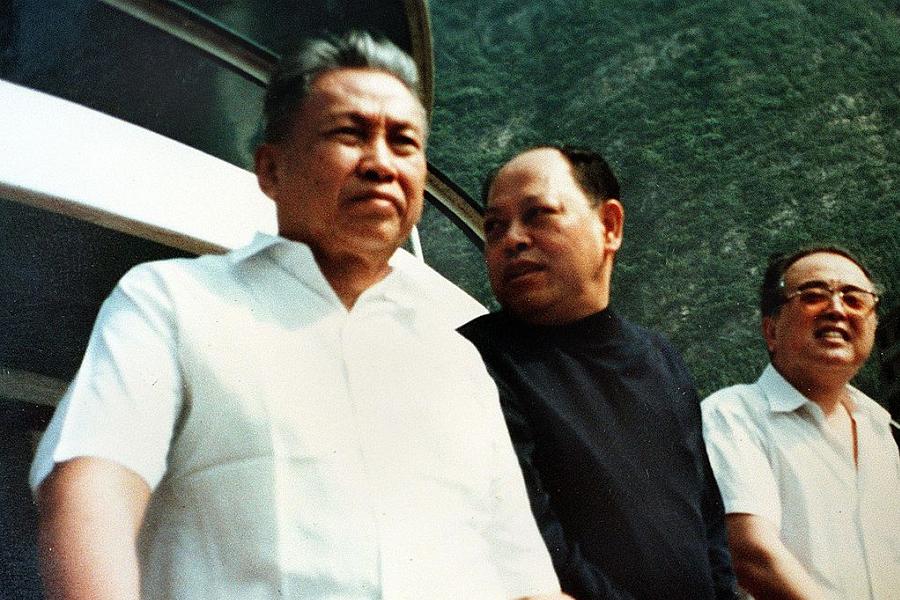
AFP/Getty ImagesAn undated photo of genocidal leader Pol Pot (left) with former Khmer Rouge foreign minister Ieng Sary (center). The man on the right is unidentified.
Though he later claimed to have risen from poor peasant stock, Pol Pot was actually quite a well-connected young man. Born Saloth Sâr on May 19, 1925, in the small village of Prek Sbauv, he was lucky enough to be a first cousin of one of the King’s concubines. Through her, Sar got a chance to study at a prestigious Cambodian school for the elites.
After flunking out of the school, he traveled to Paris to study.
Sar fell in with French communists and, after flunking out of his French school, he volunteered to return to Cambodia to evaluate the local communist parties. Stalin’s Comintern — an international organization that advocated for worldwide communist revolution — had just recognized the Viet Minh as the legitimate government of Vietnam, and Moscow was interested in whether the small agrarian country next door had potential.
Saloth Sâr arrived back home in 1953 and set himself up as a teacher of French literature. During his off time, he organized his most promising students into revolutionary cadres and met with leaders from Cambodia’s three major communist groups. Picking one of them as the “official” Cambodian communist party, Sar oversaw the merger and absorption of other leftist groups into a united front backed by the Viet Minh.
Largely unarmed, Sar’s group confined itself to virulently anti-monarchist propaganda. When King Sihanouk got tired of this and exiled the left parties, Saloth Sâr moved from Phnom Penh to a guerrilla camp on the Vietnamese border. There, he spent his time making key contacts with the North Vietnamese government and honing what would become the ruling philosophy of the Khmer Rouge.
The Cult Of Saloth Sâr
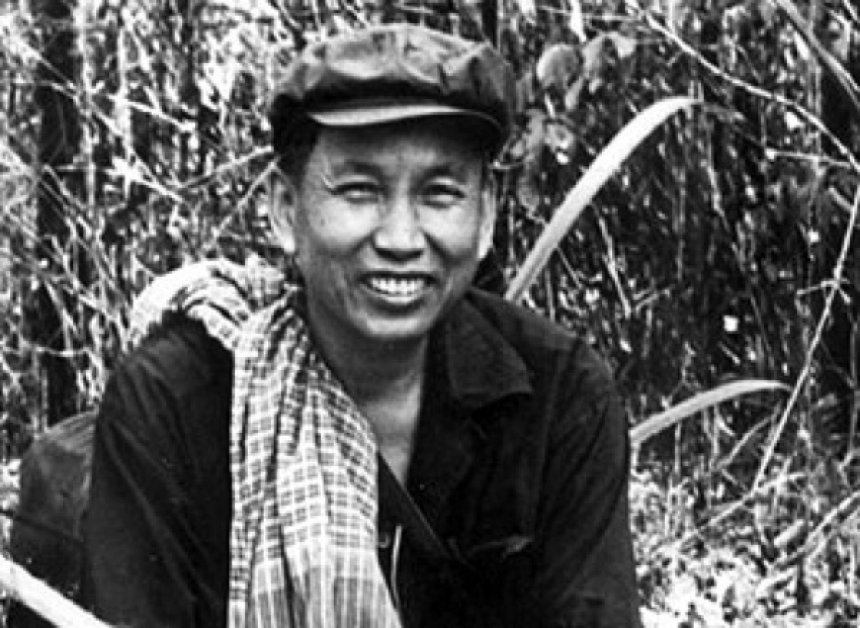
Wikimedia CommonsPol Pot liked to have his picture taken in humble surroundings. This was part of a nationwide propaganda effort to win over peasants.
By the early 1960s, Sar had grown disillusioned with his Vietnamese allies. From his point of view, they were weak on support and slow with communications, as if his movement wasn’t important to Hanoi. In a way, it probably wasn’t. Vietnam was on fire with war at the time, and Ho Chi Minh, the Vietnamese Communist revolutionary leader, had a lot to contend with.
Saloth Sâr changed during this time. Once friendly and approachable, he started cutting himself off from his subordinates and consenting to see them only if they made an appointment with his staff, despite living in an open-walled hut in the same village.
He began to sideline central committee members in favor of a more authoritarian leadership style, and he broke with traditional Marxist doctrine about urban proletariats in favor of an agrarian-peasant version of socialism that he must have thought more in keeping with Cambodia’s demographics. Vietnamese and Soviet support began to fade for the Communist Party of Kampuchea and its increasingly eccentric leader.
If history had worked out better for Cambodia, that’s where Saloth Sar’s story would have ended: as a kind of Southeast Asian Jim Jones, a minor cult leader with crazy ideas and a bad end. Instead of fading away, however, events were conspiring to hoist Sar as high as he could rise in tiny, agrarian Cambodia. While he tightened control over the cult he led, the country around him unraveled.
Death From Above
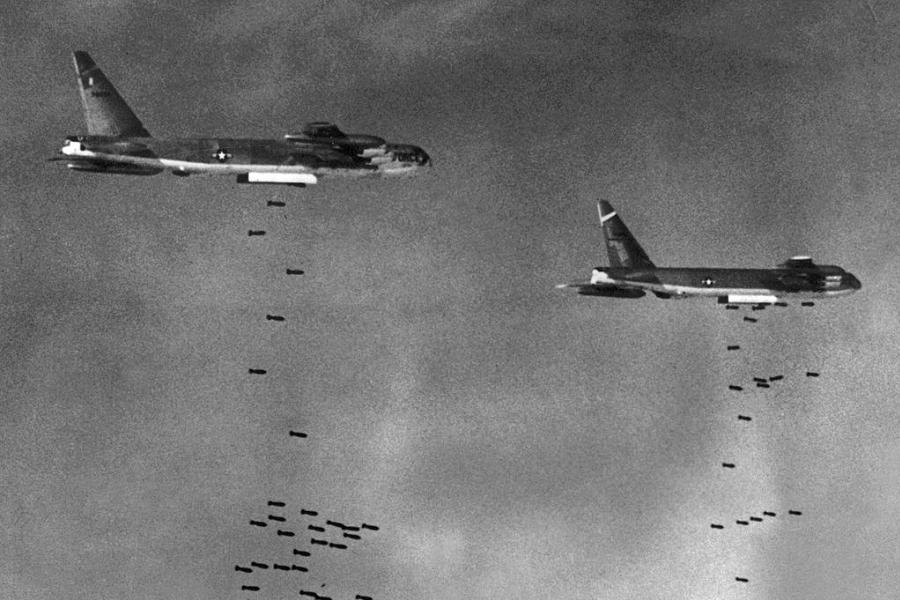
STF/AFP/Getty ImagesUS B52 drop bombs over a Viet Cong controlled area in South Vietnam on August 2, 1965 during the Vietnam War.
The American war in Vietnam saw an absurd amount of violence dumped out on a tiny strip of tropical jungle. US airstrikes dropped three times the ordnance used in all theaters of World War II over Vietnam, while ground forces poured into the country for almost daily firefights.
By 1967, some of it was spilling over into Laos and Cambodia. The infamous Secret War U.S. National Security Advisor Henry Kissinger ran in Cambodia started as an effort to dig out Viet Cong forces from border camps, but it quickly developed into Agent Orange and napalm strikes deep into Cambodia’s territory. American B-52s swarmed the area and occasionally dropped surplus bombs over Cambodia to save fuel on the flight back to Thailand.
This drove the exodus of rural farmers from the land into the city, where they had no choice but to beg for food and shelter, as well as the increasing desperation of Cambodia’s legitimate left-wing politics.
King Sihanouk was – understandably – not sympathetic to his country’s socialists, and tended to lean to the right. When he (allegedly) helped Cambodia’s rightist parties rig an election and ordered the socialist parties disbanded, tens of thousands of formerly moderate leftists fled the mass arrests and joined the Khmer Rouge.
The right-wing government repressed dissident parties, collaborated with foreign governments to escalate the bombings, and operated a regime so corrupt it was normal for army officers to draw their official paychecks along with the extra paycheck of fictitious officers that only existed on the payroll ledgers.
Grumbling about this state of affairs got loud enough that King Sihanouk decided to pit his rivals against each other to bolster his control over the country.
He did this by abruptly breaking off negotiations with North Vietnam, which was at the time using a Cambodian port for supply runs, and ordering his own government employees to stage anti-Vietnamese demonstrations in the capital.
These protests got out of hand while the King was visiting France. Both North and South Vietnamese embassies were sacked and the far-right autocrat Lon Nol staged a coup, which the U.S. recognized within hours. Sihanouk returned and began plotting with the Vietnamese to regain his throne and, incidentally, reopen that supply route for the NVA.
The Strategic Alliances Of Pol Pot And The Khmer Rouge

SJOBERG/AFP/Getty ImagesKhmer Rouge guerilla soldiers wearing black uniforms (center) drive through a street of Phnom Penh on April 17, 1975, the day Cambodia fell under the control of the Communist Khmer Rouge forces.
Unfortunately for just about everyone, the Vietnamese plan was to partner Sihanouk with Saloth Sar, whose movement now numbered in the thousands and was in open revolt against Lon Nol. Putting aside their mutual hatred, Sar and the King made several propaganda films together about their shared desire to turn Cambodia back into one big, happy family by overthrowing its government and taking control.
From 1970, the Khmer Rouge was strong enough to control the border regions and stage large-scale military raids against government targets all over the country. In 1973, diminishing American involvement in the region took the pressure off of the Khmer Rouge and allowed the guerrillas to operate in the open. The government was too weak to stop them, though it was still able to hold the cities against the rebels.
The King’s endorsement legitimized Sar’s claim to power in Cambodia. His forces pulled in thousands of recruits who were banking on a Khmer Rouge victory.
At the same time, Saloth Sâr was purging his party of potential threats. In 1974, he called together the Central Committee and denounced the southwestern front commander, a relative moderate named Prasith. Giving the man no chance to defend himself, the Party accused him of treason and sexual promiscuity and had him shot in the woods.
In the next few months, ethnic Thais like Prasith were purged. By 1975, the game was over. South Vietnam was being overrun by the North, the Americans had left for good, and Pol Pot, as he had started calling himself, was ready to make the final push into Phnom Penh and take over the country.
On April 17, 1975, just two weeks before the fall of Saigon, American forces and other foreigners evacuated the Cambodian capital as it fell to the Khmer Rouge. Pol Pot was now the undisputed master of both the Party and Cambodia.
Year Zero: The Khmer Rouge Takeover
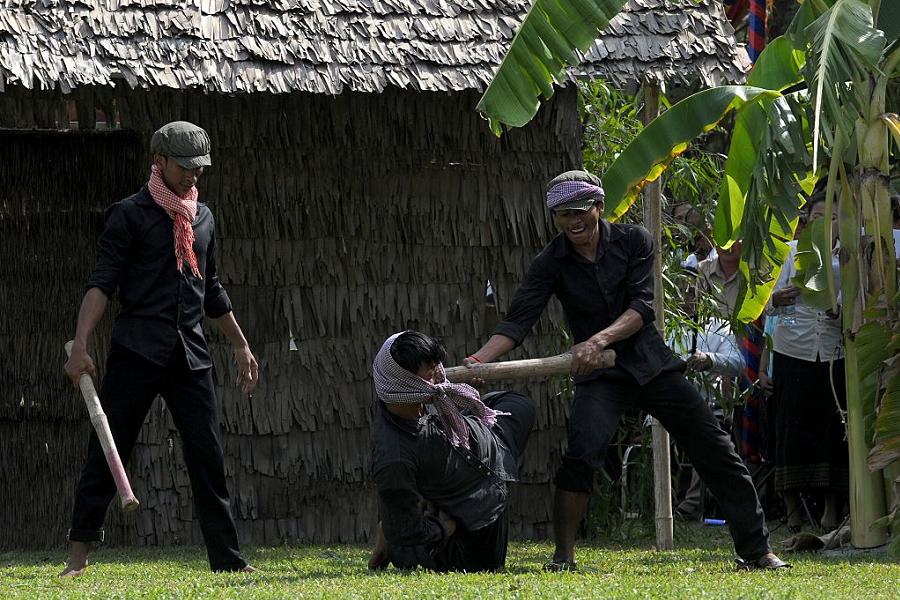
TANG CHHIN SOTHY/AFP/Getty ImagesCambodian fine arts school students take part in a performance to mark the annual “Day of Anger” at the Choeung Ek killing fields memorial in Phnom Penh on May 20, 2016.
In 1976, a confidential State Department white paper assessed the results of the Secret War on Cambodia and examined its prospects going forward. The paper predicted a famine in the country, where millions of farmers, their land lying fallow, had been herded into either the cities or remote armed camps. The secret assessment described failed agriculture, broken transportation systems, and lingering fighting on the fringes of the country.
The analysis, which was later presented to President Ford, warned of up to two million deaths from the aftermath of the bombing and the civil war, with the crisis only expected to come under control around 1980. Pol Pot and the Khmer Rouge had won control of a ruined country.
He quickly set about making it worse. On Pol Pot’s orders, virtually all foreigners were expelled and the cities were emptied. Cambodians suspected of conflicted loyalty were shot out of hand, as were doctors, lawyers, journalists, and other perceived intellectuals.
In service to the ideology that Pol Pot had crafted in the jungle, all of the elements of modern society were purged from the new Democratic Republic of Kampuchea and Year Zero was declared – the start of a new era in human history.
Apartment blocks were emptied, cars were melted down into buckets, and millions of people were forced out and onto collective farms where they were worked to death.
Workdays of 12 or 14 hours typically began and ended with mandatory indoctrination sessions, in which the peasantry was instructed in the ruling philosophy of Angka, the Party’s name for itself. In this ideology, all foreign influence was bad, all modern affectations weakened the nation, and Kampuchea’s only way forward was through isolation and heavy labor.
The Kill List

TANG CHHIN SOTHY/AFP/Getty ImagesEach year on May 20, the Cambodian Government sponsors a “Day of Anger” to remember the past regime’s crimes. The event features reenactments of killing fields executions and public displays of relics. Here, a Cambodian man prays before some of the 20,000 human skulls recovered from a single site.
The Khmer Rouge seems to have known that this wasn’t going to be a popular line to take. Every policy of the Party had to be enforced at gunpoint by black-clad soldiers, some as young as 12, toting AK-47s around the perimeters of the work camps.
The party punished even the smallest deviations of opinion with torture and death, with victims typically suffocated inside blue plastic bags or chopped to death with shovels. Ammunition was in short supply, so drownings and stabbings became common methods of execution in the Killing Fields.
Whole sections of Cambodia’s population had been marked down on the Khmer Rouge’s kill list, which was published by Sianhouk prior to the seizure of power, and the regime did what it could to fill up the Killing Fields with as many class enemies as possible.
During this purge, Pol Pot worked to shore up his base by promoting anti-Vietnamese sentiment. The two governments had had a falling out in 1975, with Kampuchea aligning with China and Vietnam leaning more toward the Soviet Union.
Now, every hardship in Cambodia was the fault of Vietnamese treachery. Food shortages were blamed on Hanoi’s sabotage, and the sporadic resistance was said to be under the direct control of the Vietnamese counterrevolutionaries.
Relations between the countries soured until 1979 when Pol Pot began claiming border areas for his starving empire. That’s when Vietnam, which had just beaten back the American occupation and built up a substantial military force of its own, stepped in and pulled the plug.
Invading Vietnamese forces drove the Khmer Rouge out of power and back into its jungle camps. Pol Pot himself had to run and hide, while hundreds of thousands of starving people fled their communes and walked to refugee camps in Thailand. By 1979, the Khmer Rouge’s reign of terror was over.
The Fall Of The Khmer Rouge And Pol Pot
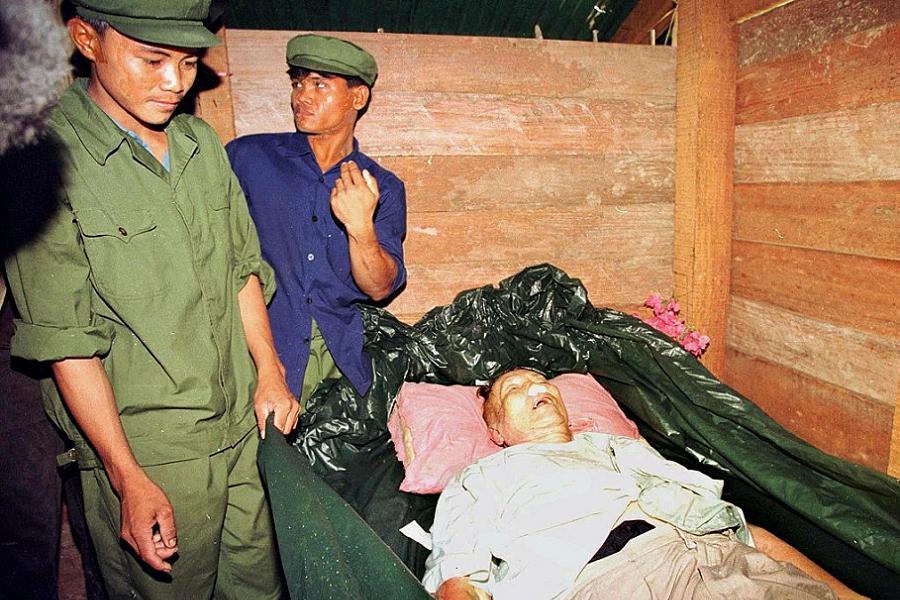
PORNCHAI KITTIWONGSAKUL/AFP/Getty ImagesKhmer Rouge soldiers stand next to the body of their former leader Pol Pot, lying in a plastic bag filled with ice blocks to preserve his body, prior to his cremation.
Unbelievably, though Angka was no more, Khmer Rogue forces weren’t completely broken. Retreating to bases in the west, where travel is difficult and even a large force can hide indefinitely, Pol Pot kept his grip on the defeated remnants of his party for another 15 years.
In the mid-1990s, the new government began aggressively recruiting Khmer Rouge defectors and subverting the organization. Gradually the Khmer Rouge began to change complexion, and many of Pol Pot’s old cronies either died or took advantage of various amnesties.
In 1996, Pol Pot lost control of the movement and was confined by his own troops. After that, he was condemned to death in absentia by a Cambodian court for the Killing Fields, and then given a show trial by the Khmer Rouge itself and sentenced to a lifetime under house arrest.
Just before the 23rd anniversary of his triumphant seizure of power, the Khmer Rouge agreed to hand Pol Pot over to Cambodian authorities to answer for his crimes, presumably triggering his suicide on April 15, 1998. He was 72 years old.
Get to know the human cost of Pol Pot and the Khmer Rouge’s ideology with these portraits of political prisoners during the Cambodian genocide. Then, see the devastation of the Armenian genocide, another of the 20th century’s heartbreakingly overlooked mass killings.





